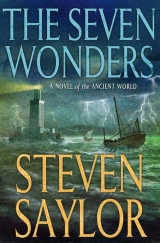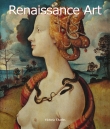
Текст книги "The Seven Wonders: A Novel of the Ancient World (Novels of Ancient Rome)"
Автор книги: Steven Saylor
Жанр:
Исторические детективы
сообщить о нарушении
Текущая страница: 22 (всего у книги 22 страниц)
The Great Pyramid at Giza, our only surviving Wonder, has been endlessly explored by books, magazine articles, television programs, etc. It was equally famous—and mysterious—in the time of Gordianus. Herodotus, Strabo, Diodorus Siculus, Pliny, and Ammianus Marcellinus all wrote about the pyramids.
Herodotus tells us about the use of mummies as security for loans; Diodorus Siculus repeats this information, and both authors provide fascinating details about the different forms of mummification.
Neither Herodotus nor the later writers Strabo and Diodorus Siculus (both contemporaries of Gordianus) makes any mention of the Great Sphinx of Giza, which isdescribed by Pliny the Elder, writing a couple of generations after Gordianus. Pliny notes that Egyptian sources, too, are silent about the Sphinx. This leads to the hypothesis that the giant monument was buried by sand for a long period, and not rediscovered until the time of the last Ptolemaic rulers or even later. (See the Loeb edition of Pliny, 36.17, and the translator’s note by D. E. Eichholz.)
As readers of the novel will gather, the Pharos Lighthouse was not among the original Seven Wonders; it was added only later, long after the list was first devised, usually replacing one of the faded Babylonian Wonders. (Many other variations occur in the canonical list over the centuries; the permutations are too numerous and complicated to recount here.) Even after seeing the original Seven Wonders, Gordianus marvels at the Pharos, the world’s first (and for many centuries, only) skyscraper.
A miracle of engineering, the Pharos survived until the fourteenth century, when earthquakes sent it tumbling into the harbor of Alexandria. Hermann Thiersch assembled all the literary sources, coin images, and other data about the lighthouse in Pharos, Antike, Islam und Occident(Teubner, 1909); if you can find an original edition of this classic, feast your eyes on the two enormous foldout illustrations of the Pharos as rendered by Thiersch. Equally essential to an understanding of the Pharos’s history and appearance is a close reading of the details in P. M. Fraser’s three-volume Ptolemaic Alexandria(Clarendon Press, 1972); see vol. I, pp. 17–21, and vol. II, pp. 45–46. Judith McKenzie’s The Architecture of Alexandria and Egypt, c. 300 B.C.–A.D. 700(Yale University Press, 2007) also provides useful information about the lighthouse, including the idea that naphtha may have been used as a fuel; see pages 41–48.
Our ideas about the Pharos continue to evolve. In recent decades, underwater archaeology in the harbor of Alexandria by Jacques-Yves Empereur and others has yielded new knowledge and recovered artifacts related to the lighthouse. New techniques of virtual reality and digital reconstruction have also been brought to bear on the mystery of its design and dimensions. During the writing of this novel I was privileged to have access to the work of Anthony Caldwell, research scholar at the Experiential Technologies Center, UCLA. A draft copy of Caldwell’s Reconstruction of the Pharos Lighthouse of Alexandria,including detailed diagrams of the lighthouse (based on his synthesis of literary, archaeological, and engineering knowledge), fired my imagination.
Everyone could see the Pharos—from a distance of 300 stadia, or over thirty miles, according to Josephus. But could the Pharos gaze back, watching those who watched it? This is from John Webster Spargo’s Virgil the Necromancer(Harvard University Press, 1934): “The lighthouse at Alexandria threw its beams far and mystified mankind. Its use as a mere lighthouse was eclipsed in the popular mind [in the Middle Ages] and it was regarded as an instrument which could ‘see’ as far as it threw its beams—a misconception … perhaps associated with the knowledge that it had a reflector, a mirror.” From the Pharos of Alexandria we may trace a direct line to the many magical mirrors and “all-seeing” towers of fiction in the Middle Ages and Renaissance, all the way to the far-seeing palantíri,the Eye of Sauron, and the two towers of Orthanc and Barad-dûr in Tolkien’s The Lord of the Rings.
A few books that cover all seven Wonders should be mentioned. Die Sieben Weltwunder der Antike: Wege der Wiedergewinnung aus sechs Jahrhunderten(Verlag Philipp von Zabern, 2003) by Max Kunze, a catalogue of an exhibition held at the Winckelmann-Museums in Stendal, Germany, contains many useful images. Also lavishly illustrated is Die Sieben Weltwunder: 5000 Jahre Kultur und Geschichte der Antikeby Artur Müller and Rolf Ammon (Scherz Verlag, 1966). Kai Brodersen’s Dic Sieben Weltwunder(Beck, 1996), which includes a comprehensive survey of sources, has gone through numerous editions in Germany, but has not been translated into English. A basic introduction to the Wonders can be found in The Seven Wonders of the Ancient World,edited by Peter Clayton and Martin Price (Routledge, 1988); the scholarship of the contributors is sound, but the division of the subject into essays by different authors gives the book a less coherent focus than the previously mentioned The Seven Wonders of the Worldby Mike Ashley.
Looming in the background of the novel are two world-changing events: The so-called Social War in Italy, and the incipient war for hegemony in Asia Minor between Rome and Mithridates. The literature on these events is vast, but I should mention Intelligence Activities in Ancient Rome: Trust in the Gods, but Verifyby Rose Mary Shelton (Frank Cass, 2005); the chapter entitled “Diplomat, Trader, Messenger, Client, Spy: Rome’s Eyes and Ears in the East” was especially pertinent to my purposes. A lecture at UC Berkeley by Adrienne Mayor, author of The Poison King: The Life and Legend of Mithradates, Rome’s Deadliest Enemy(Princeton, 2010), was particularly rewarding; it is to Mayor that I owe the line, “Rome is the disease, Mithridates is the cure.”
* * *
Various episodes in this novel were published first as short stories. (Details may be found on the indicia page.) I am grateful to the anthology and magazine editors who first read and commented on those stories: Mike Ashley, Gardner Dozois, George R. R. Martin, Gordon Van Gelder, and Janet Hutchings. I was especially gratified to see Gordianus in the pages of The Magazine of Fantasy and Science Fiction,because my first professional sale was to that magazine, many years ago; and I was glad to see Gordianus back in the pages of Ellery Queen Mystery Magazine,where the very first Gordianus short story appeared.
I also want to thank my longtime editor at St. Martin’s Press, Keith Kahla, my longtime agent, Alan Nevins of Renaissance, and my longtime partner, Rick Solomon, all of whom helped Gordianus and his creator explore the Seven Wonders of the World.
ALSO BY STEVEN SAYLOR
Empire: The Novel of Imperial Rome
Roma: The Novel of Ancient Rome
A Twist at the End: A Novel of O. Henry
Have You Seen Dawn?
ROMA SUB ROSA®
CONSISTING OF:
Roman Blood
The House of the Vestals
A Gladiator Dies Only Once
Arms of Nemesis
Catilina’s Riddle
The Venus Throw
A Murder on the Appian Way
Rubicon
Last Seen in Massilia
A Mist of Prophecies
The Judgment of Caesar
The Triumph of Caesar
ABOUT THE AUTHOR

Steven Saylor is the author of the New York Timesbestselling Romaand its sequel, Empire, as well as the previous books in the long-running Roma Sub Rosa series featuring Gordianus the Finder. Saylor’s books have been published around the world in twenty-one languages. He divides his time between Berkeley, California, and Austin, Texas. Visit the author’s Web site at www.stevensaylor.com.
This is a work of fiction. All of the characters, organizations, and events portrayed in this novel are either products of the author’s imagination or are used fictitiously.
THE SEVEN WONDERS. Copyright © 2012 by Steven Saylor. All rights reserved. For information, address St. Martin’s Press, 175 Fifth Avenue, New York, N.Y. 10010.
www.minotaurbooks.com
Some chapters of this novel, in slightly different form, were first published as short stories in the following magazines and anthologies (listed by publication date): “The Monumental Gaul” in Ellery Queen Mystery Magazine, August 2011; “The Witch’s Curse” (as “The Witch of Corinth”) in The Magazine of Fantasy & Science Fiction, July/August 2011; “Something to Do with Diana” in The Mammoth Book of Historical Crime Fiction, edited by Mike Ashley (London: Constable & Robinson, August 2011; Philadelphia: Running Press, September 2011); “Styx and Stones” in Down These Strange Streets, edited by George R. R. Martin and Gardner Dozois (New York: Penguin, November 2011); “The Widows of Halicarnassus” in Ellery Queen Mystery Magazine, March/April 2012; “O Tempora! O Mores! Olympiad!” in Ellery Queen Mystery Magazine, May 2012; “The Return of the Mummy” in Ellery Queen Mystery Magazine, June 2012.
The Library of Congress has cataloged the print edition as follows:
Saylor, Steven, 1956–
The seven wonders : a novel of the ancient world / Steven Saylor.—1st ed.
p. cm.
ISBN 978-0-312-35984-3 (hardcover)
ISBN 978-1-4668-0196-7 (e-book)
1. Gordianus the Finder (Fictitious character)—Fiction. 2. Rome—History—Republic, 265–30 B.C.—Fiction. I. Title.
PS3569.A96S48 2012
813'.54—dc23
2012005475
e-ISBN 9781466801967
First Edition: June 2012







